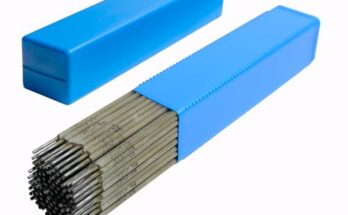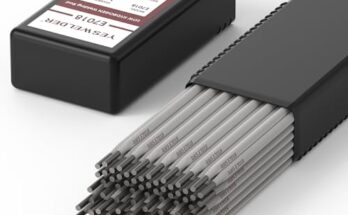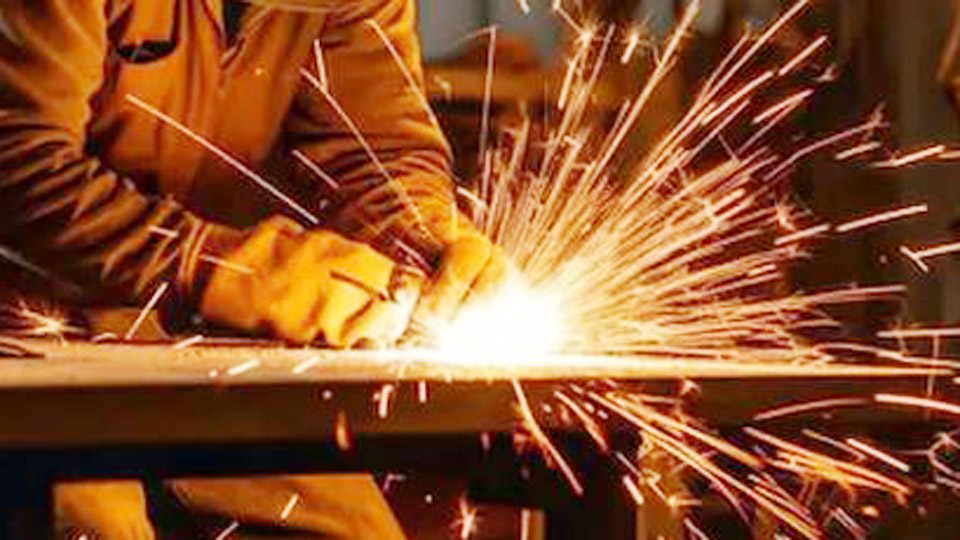Welding galvanized steel can be tricky, and if not done properly, it can be dangerous. The zinc coating on galvanized steel, while great for preventing rust, creates challenges when welding. It burns off, producing toxic fumes and affecting weld quality. But don’t worry—I’ve worked with galvanized steel many times, and I’ve learned the best ways to get strong, clean welds while keeping safety a top priority.

Image by reddit
If you’re planning to weld galvanized steel, you need to prepare the metal correctly, use the right welding process, and take safety precautions to protect yourself from harmful fumes. Let’s go through everything step by step so you can weld galvanized steel safely and efficiently.
Galvanized Steel and Its Challenges
Galvanized steel is regular steel coated with a layer of zinc to prevent rust. This makes it an excellent choice for outdoor structures, fences, pipes, and automotive parts. However, when heated, the zinc coating vaporizes and releases zinc oxide fumes.
These fumes can cause metal fume fever, which feels like the flu—chills, fever, nausea, and body aches. That’s why safety is the most important factor when welding galvanized steel.
Beyond health concerns, welding over zinc can lead to:
- Porous welds that weaken the joint
- Excessive spatter and contamination
- Cracking or brittleness in the final weld
The best way to avoid these issues is to properly prepare the metal and use the right welding techniques.
How to Prepare Galvanized Steel for Welding
Before you start welding, you need to remove the zinc coating from the weld area. This helps prevent contamination and reduces harmful fumes.
Grinding Off the Zinc Coating
Using a grinder, wire wheel, or flap disc is the easiest and fastest way to remove the zinc layer. You should grind off about 1 to 2 inches around the weld joint for better results.
Chemical Stripping
If grinding isn’t an option, you can remove the zinc with chemicals like muriatic acid or vinegar. Simply apply the acid to the weld area, let it sit for a few minutes, and then rinse it off thoroughly. Make sure to work in a well-ventilated space and wear gloves when handling chemicals.
Sandblasting
For larger projects, sandblasting can strip off the zinc coating quickly and evenly. This method works well for structural steel and thick metal.
Cleaning the Surface
Once the zinc is removed, wipe the area with acetone or alcohol to remove any remaining dust, oil, or dirt. This step is essential for getting a clean and strong weld.
Choosing the Right Welding Process for Galvanized Steel
Different welding methods can be used for galvanized steel, but some work better than others. Here’s a breakdown of the most common options:
| Welding Process | Best For | Pros | Cons |
|---|---|---|---|
| MIG (GMAW) | General welding, sheet metal | Fast and easy to use | More spatter, can trap zinc |
| TIG (GTAW) | Precision welding, thin metal | Clean welds, less heat | Slower, requires skill |
| Stick (SMAW) | Outdoor welding, thick metal | Works in all conditions | More fumes, rough welds |
I usually prefer TIG welding for thinner galvanized steel because it gives the cleanest results. For thicker materials, stick welding works well, especially for outdoor jobs.
Best Welding Settings for Galvanized Steel
Each welding process requires different settings. Here’s a quick guide:
MIG Welding Settings
- Wire type: ER70S-6 (or flux-core for outdoor work)
- Shielding gas: 75% Argon / 25% CO2
- Voltage: Medium setting
- Wire speed: Adjust for a smooth arc
TIG Welding Settings
- Tungsten: 2% Thoriated or 2% Lanthanated
- Filler rod: ER70S-2 or Silicon Bronze
- Gas flow: 15–20 CFH (100% Argon)
- Amperage: Adjust based on thickness (40–150 Amps)
Stick Welding Settings
- Electrode: E6011 or E6013
- Amperage: 90–130 Amps
- Polarity: DC+ (Direct Current Positive)
Step-by-Step Guide to Welding Galvanized Steel Safely
Now that everything is set up, let’s go through the welding process.
Secure the Metal
Clamp your workpiece securely to prevent movement. If possible, position it in a way that allows fumes to escape easily.
Maintain Proper Ventilation
Weld in a well-ventilated area or use a fume extractor. If you’re indoors, open windows and use fans to push fumes away.
Use a Steady Travel Speed
Move at a steady pace to control heat and minimize zinc contamination. Too slow, and you’ll burn the metal; too fast, and you won’t get proper penetration.
Keep the Arc Length Short
A short arc length helps maintain good control over the weld puddle. It also reduces splatter and porosity.
Avoid Overheating
Galvanized steel warps easily when overheated. Use short welds (stitch welding) instead of long beads to prevent excessive heat buildup.
Clean the Weld After Finishing
Once the weld is complete, brush off any slag or residue. If needed, apply cold galvanizing spray to restore corrosion resistance.
Safety Precautions for Welding Galvanized Steel
Welding galvanized steel can be hazardous if you don’t take proper precautions. Here’s how to stay safe:
- Wear a respirator – Use a P100-rated mask to filter out toxic zinc fumes.
- Use a welding hood with proper shading – A shade 10–12 lens is recommended for MIG or stick welding.
- Wear protective clothing – Zinc fumes can irritate the skin, so wear gloves, a welding jacket, and long pants.
- Work in a well-ventilated area – Fume extractors, fans, or outdoor workspaces are best.
- Take breaks if needed – If you feel dizzy or lightheaded, step away and get fresh air immediately.
Common Welding Issues and How to Fix Them
Even with the right setup, you might run into some problems. Here’s how to troubleshoot them:
| Issue | Cause | Solution |
|---|---|---|
| Porous welds | Zinc contamination | Grind off more zinc before welding |
| Excessive spatter | Too much heat or poor settings | Adjust amperage and travel speed |
| Cracking | Brittle welds due to zinc | Use the correct filler metal |
| Fume buildup | Poor ventilation | Use a fume extractor or work outdoors |
Conclusion
Welding galvanized steel requires extra care and preparation, but with the right techniques, it can be done safely and effectively. Always remove the zinc coating before welding, use proper safety gear, and choose the right welding process for your project.
I’ve had my fair share of mistakes when welding galvanized steel, but learning from them has made the process much easier. If you follow these steps, you’ll get strong, clean welds while keeping yourself safe.
Frequently Asked Questions
Can you weld galvanized steel without removing the zinc coating?
Yes, but it’s not recommended. The weld will be weaker, and the fumes are toxic.
What happens if you breathe in zinc fumes?
You may get metal fume fever, which causes flu-like symptoms such as nausea, chills, and fever.
What is the best welding process for galvanized steel?
TIG welding works best for thin metal, while stick welding is good for outdoor or thick materials.
Do you need special filler metal for welding galvanized steel?
Use ER70S-2 or ER70S-6 for TIG and MIG welding. For stick welding, E6011 or E6013 works well.


